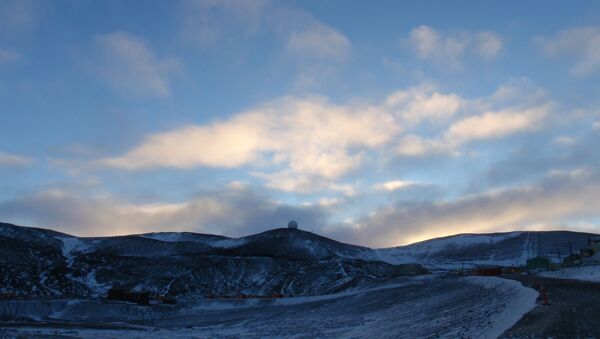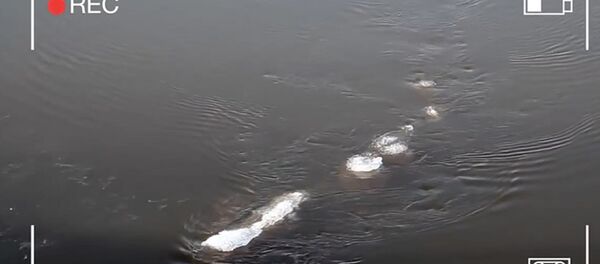“Because of its harsh conditions, Antarctica is probably one of the toughest places to work for palaeontologists,” a news release from the Universidad de Chile states. “However, precisely because of this, information is scarce, and new discoveries can be highly rewarding. In 2010, an expedition of Chilean scientists to Seymour Island encountered particularly bad weather. Only during their last days in the field, after dreadful walks through knee-deep mud, they made a truly exciting discovery in 66 million year-old rocks: The fossil remains of a particularly large skull of a Mosasaur, a giant sea lizard.”
The skull of the predatory lizard is approximately four feet long, leading scientists to believe this is the largest known creature to ever inhabit the region.
“Kaikaifilu is a new species of giant sea lizard (mosasaur) discovered in 66 million year-old rocks of Antarctica. At about 10 m long, it is the largest known top marine predator from this continent. It lived near the end of the dinosaur age, when Antarctica was a much warmer ecosystem, and fed on filter-feeding marine reptiles,” according to the release.
Based on the size of the skull, they believe the massive sea monster was over 32 feet long.
"The increasing diversity of endemic Cretaceous marine reptiles in the southern hemisphere are slowly changing an historical paradigm. Since the 19th century many southern fossil reptiles had been assigned to species from the northern hemisphere. In this sense, Kaikaifilu adds to this paradigm shift. The southern record has scarce informative mosasaur skulls, most of them found in New Zealand. However, in southern South America and Antarctica, mosasaur remains are especially scarce. Hence the relevance of the new specimen, which shows a distant kinship with respect to the northern hemisphere mosasaurs,” Rodrigo Otero, one of the authors of the study, wrote.
Paleontologists now believe that the large teeth that have been found all over Antarctica may potentially belong to the Kaikaifilu, instead of various other species of sea lizards, as was previously suggested.
“Prior to this research, the known mosasaur remains from Antarctica provided no evidence for the presence of very large predators like Kaikaifilu, in an environment where plesiosaurs were especially abundant. The new find complements one expected ecological element of the Antarctic ecosystem during the latest Cretaceous" says Otero.




